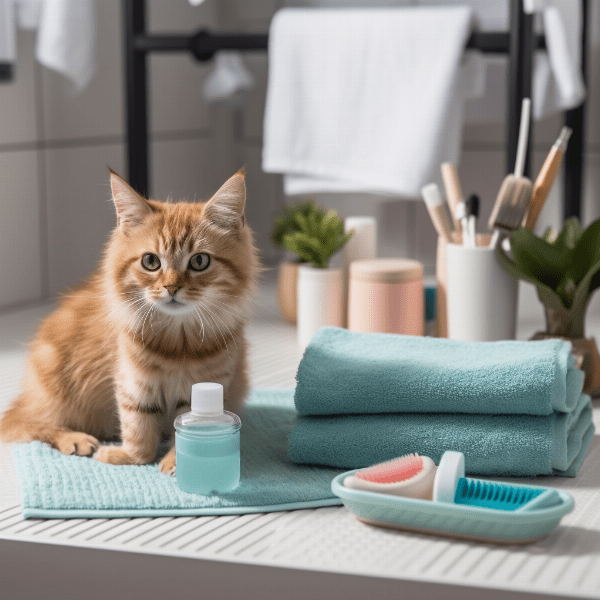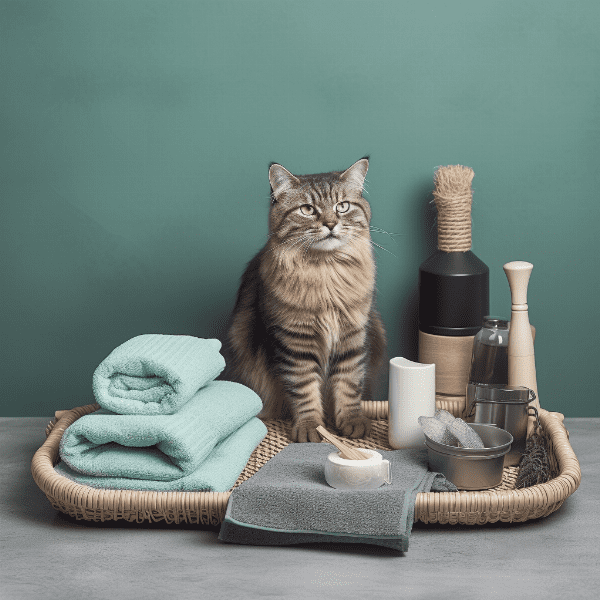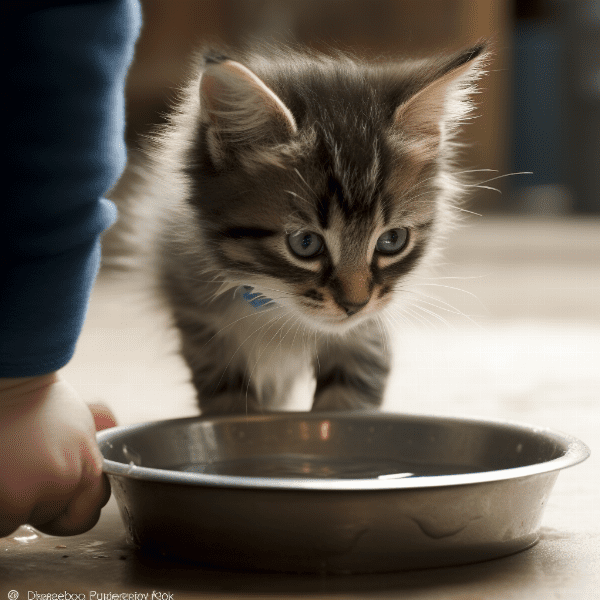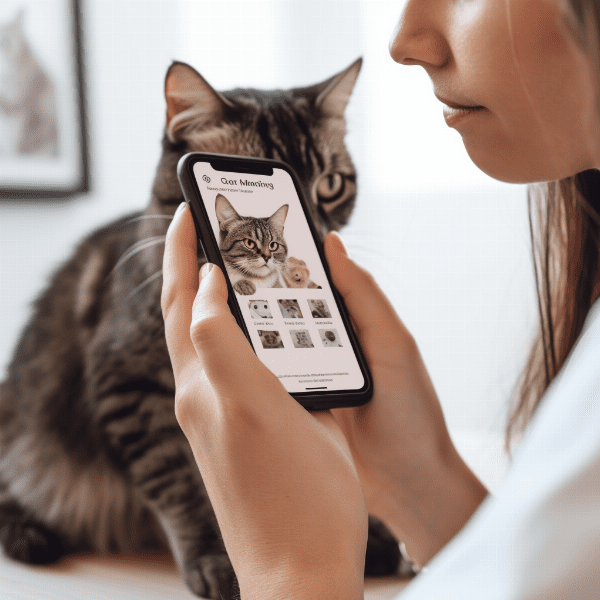Table of Contents
- Why Do Kittens Need Baths?
- Preparing for Bath Time: Supplies and Safety Measures
- Setting the Scene: Creating a Calming Bathing Environment
- Getting Your Kitten Accustomed to Water: Introducing Them to the Bath
- Lathering Up: Choosing the Right Shampoo and Techniques for Gentle Cleansing
- Rinsing and Drying: Proper Methods to Ensure Your Kitten’s Comfort and Health
- Post-Bath Care: What to Do After Your Kitten’s Bath
- Troubleshooting Common Kitten Bathing Challenges
- Bath Time Dos and Don’ts: Key Takeaways for New Kitten Owners
- When to Call a Professional: Knowing When to Seek Veterinary Assistance.
Why Do Kittens Need Baths?
Kittens are naturally very clean animals and are known to spend several hours every day grooming themselves. However, there are times when a bath is necessary to keep your kitten healthy and happy. In this section, we’ll discuss the reasons why kittens need baths and the benefits that come with regular bathing.
Promotes Good Hygiene
One of the primary reasons why kittens need baths is to promote good hygiene. Despite their best efforts, kittens can still get dirty and smelly, especially if they have been playing outside or exploring their environment. Dirt and debris can build up on their fur, leading to matting and tangling, which can be uncomfortable and painful for your kitten.
Helps Prevent Illness and Parasites
Another reason why kittens need baths is to help prevent illness and parasites. When left unwashed, dirt and debris can create an ideal environment for bacteria and parasites to thrive. This can lead to skin irritations, infections, and even flea or tick infestations. Regular baths help to keep your kitten’s skin and fur clean and healthy, reducing the risk of these issues.
Introduces Them to Water
Bathing your kitten from an early age can also help to introduce them to water, which is an essential life skill. Cats are not naturally fond of water, so by getting them used to it from an early age, you can help them develop a more positive relationship with water. This can be helpful in the future if your kitten needs to be bathed again or if they need to swim.
Builds a Stronger Bond
Finally, regular baths can also help to build a stronger bond between you and your kitten. Bathing your kitten can be a fun and bonding experience, especially if you take the time to make it a positive experience. By using gentle techniques and taking care not to stress your kitten out, you can help them feel more comfortable and secure around you.
Overall, there are several good reasons why kittens need baths. By promoting good hygiene, preventing illness and parasites, introducing them to water, and building a stronger bond, regular baths can help to keep your kitten healthy and happy. In the next section, we’ll discuss how to prepare for bath time and what supplies you’ll need.

Preparing for Bath Time: Supplies and Safety Measures
Before you give your kitten a bath, it’s important to prepare everything you’ll need and take some safety measures to ensure a successful and stress-free experience. In this section, we’ll discuss the supplies you’ll need and some safety measures you should take.
Supplies You’ll Need
The following are the supplies you’ll need to give your kitten a bath:
- A bathtub or sink with a non-slip surface
- A small bucket or cup for rinsing
- A gentle kitten shampoo
- A soft washcloth or sponge
- A towel or two for drying
- A brush or comb for afterward
It’s essential to use a gentle kitten shampoo as regular human shampoo can be too harsh for their delicate skin.
Safety Measures to Take
Before giving your kitten a bath, it’s important to take some safety measures to ensure their comfort and safety. These include:
- Ensuring the water temperature is lukewarm, not too hot or cold
- Filling the tub with only a few inches of water to avoid overwhelming your kitten
- Keeping a firm grip on your kitten at all times to prevent slipping and drowning
- Talking to your kitten in a soothing voice to keep them calm and relaxed
- Avoiding getting water in their ears, eyes, and nose as it can be uncomfortable for them
In the next section, we’ll discuss how to create a calming environment for your kitten during bath time.

Setting the Scene: Creating a Calming Bathing Environment
Choosing the Right Time
Choosing the right time to give your kitten a bath is crucial to creating a calming environment. You should avoid bath time when your kitten is already stressed or anxious, such as after playtime or when they’re hungry. Instead, choose a time when your kitten is relaxed, such as after a nap or when they’re feeling calm and content.
Minimizing Distractions
To help your kitten stay calm during bath time, you should also minimize distractions. This means turning off the TV or any loud noises and making sure there are no other pets or people in the room. This will help your kitten to focus on the task at hand and feel more secure.
Using Aromatherapy
Aromatherapy can also be an effective way to create a calming environment for your kitten during bath time. You can use essential oils such as lavender or chamomile, which have soothing and relaxing properties, to help your kitten feel more at ease. However, it’s important to use essential oils with caution and consult with your veterinarian before use.
Using Calming Music
Playing calming music can also be an effective way to create a calming environment for your kitten during bath time. Soft, gentle music can help to soothe your kitten and reduce anxiety. You can choose music specifically designed for pets or classical music.

Getting Your Kitten Accustomed to Water: Introducing Them to the Bath
Start Slowly
It’s essential to start slowly when introducing your kitten to water. You don’t want to overwhelm them or cause them unnecessary stress or anxiety. Start by wetting a soft cloth or sponge and gently wiping your kitten’s fur. This will help them to get used to the sensation of being wet without being submerged in water.
Use Positive Reinforcement
Using positive reinforcement can also be an effective way to help your kitten feel more comfortable with water. You can offer treats or praise when your kitten is calm and relaxed around water. This will help them to associate water with positive experiences.
Gradually Increase Exposure
As your kitten becomes more comfortable with water, you can gradually increase their exposure. Start by filling a shallow basin or sink with a few inches of water and let your kitten explore it on their terms. You can place some toys or treats in the water to encourage them to come closer.
Keep It Positive
Throughout the introduction process, it’s essential to keep things positive. Avoid forcing your kitten into water or making them feel uncomfortable or stressed. Instead, go at their pace and take things slowly. This will help them to feel more comfortable and secure around water.
By getting your kitten accustomed to water before bath time, you can help to reduce stress and anxiety and make the experience more pleasant for both you and your kitten. In the next section, we’ll discuss the proper techniques for shampooing your kitten during bath time.

Lathering Up: Choosing the Right Shampoo and Techniques for Gentle Cleansing
Choosing the right shampoo and using the proper techniques for shampooing your kitten during bath time can help to ensure a gentle and effective cleansing experience. In this section, we’ll discuss how to choose the right shampoo and the techniques for gentle cleansing.
Choosing the Right Shampoo
When choosing a shampoo for your kitten, it’s essential to choose a gentle kitten shampoo that’s specifically formulated for their delicate skin. Avoid using regular human shampoos as they can be too harsh and irritate their skin.
You should also avoid using flea or tick shampoos unless recommended by your veterinarian. These shampoos can be too strong for kittens and can cause adverse reactions.
Techniques for Gentle Cleansing
When shampooing your kitten, it’s important to use gentle techniques to avoid stressing or injuring them. The following are some techniques for gentle cleansing:
- Wet your kitten’s fur thoroughly with lukewarm water.
- Apply a small amount of shampoo to your hand and work it into a lather.
- Gently massage the shampoo into your kitten’s fur, taking care not to get any shampoo in their eyes, ears, or nose.
- Rinse thoroughly with lukewarm water, making sure to remove all the shampoo.
- Use a soft washcloth or sponge to clean your kitten’s face and ears.
- Repeat the process if necessary, but avoid over-shampooing as it can dry out their skin.
After shampooing, rinse your kitten’s fur thoroughly to avoid any leftover shampoo residue. This will help to prevent skin irritation or allergies.
By choosing the right shampoo and using gentle techniques for cleansing, you can help to ensure a gentle and effective cleansing experience for your kitten. In the next section, we’ll discuss the proper methods for rinsing and drying your kitten after their bath.

Rinsing and Drying: Proper Methods to Ensure Your Kitten’s Comfort and Health
After shampooing your kitten during bath time, it’s important to rinse and dry them properly to ensure their comfort and health. In this section, we’ll discuss the proper methods for rinsing and drying your kitten.
Rinsing Your Kitten
After shampooing, it’s important to rinse your kitten thoroughly to ensure that all the shampoo has been removed from their fur. The following are some tips for rinsing your kitten properly:
- Use lukewarm water to rinse your kitten thoroughly.
- Avoid getting water in their ears, nose, and eyes as it can be uncomfortable for them.
- Use a small bucket or cup to pour water over your kitten’s fur, taking care not to pour too much water at once.
Make sure to remove all the shampoo from your kitten’s fur before moving on to the drying process.
Drying Your Kitten
Drying your kitten properly is crucial to ensuring their comfort and health. The following are some tips for drying your kitten:
- Use a soft towel to gently pat your kitten’s fur dry. Avoid rubbing their fur as it can damage their delicate skin.
- If necessary, you can use a blow dryer on a low heat setting to dry your kitten’s fur. However, make sure to hold the dryer at least six inches away from your kitten to avoid burning them.
- You can also use a brush or comb to gently remove any tangles or mats in your kitten’s fur.
Make sure your kitten is completely dry before allowing them to go outside or grooming them further.
By rinsing and drying your kitten properly, you can ensure their comfort and health after bath time. In the next section, we’ll discuss what to do after your kitten’s bath to ensure their continued health and well-being.

Post-Bath Care: What to Do After Your Kitten’s Bath
After your kitten’s bath, it’s important to take some steps to ensure their continued health and well-being. In this section, we’ll discuss what to do after your kitten’s bath to ensure they stay clean and comfortable.
Towel Dry Your Kitten
After rinsing your kitten, make sure to towel dry them thoroughly to remove any excess water. Use a soft towel and gently pat your kitten dry. Avoid rubbing their fur vigorously as it can damage their skin. You can also use a blow dryer on a low heat setting if necessary, but make sure to hold it at least six inches away from your kitten.
Brush Your Kitten’s Fur
Once your kitten is dry, it’s important to brush their fur to remove any tangles or mats. Use a soft brush or comb and work gently through their fur, taking care not to pull or tug at any knots. Regular brushing can help to prevent mats from forming and keep your kitten’s fur healthy and shiny.
Trim Your Kitten’s Nails
While your kitten is still clean and relaxed after their bath, it’s a good time to trim their nails. Use a pair of kitten nail clippers and trim only the tip of the nail, taking care not to cut into the quick. This will help to prevent any scratching or damage to furniture or other items in your home.
Reward Your Kitten
After your kitten’s bath, it’s important to reward them for their good behavior. Give them a special treat or toy and plenty of praise to help reinforce positive behavior and make bath time a positive experience.
By following these post-bath care steps, you can help to ensure your kitten stays clean and comfortable and make bath time a positive experience for both you and your kitten. In the next section, we’ll discuss some common kitten bathing challenges and how to troubleshoot them.

Troubleshooting Common Kitten Bathing Challenges
Bathing a kitten can be a challenging task, especially if they’re new to the experience. In this section, we’ll discuss some common kitten bathing challenges and how to troubleshoot them.
Challenge: Your Kitten is Afraid of Water
If your kitten is afraid of water, it can be challenging to get them to cooperate during bath time. To overcome this challenge, you can start by introducing your kitten to water slowly, as discussed in the earlier section. You can also try using a shallow basin or sink instead of a bathtub and fill it with only a few inches of water. Make sure to talk to your kitten in a soothing voice and use positive reinforcement.
Challenge: Your Kitten is Scratching or Biting
Kittens can be easily agitated during bath time and may scratch or bite to get away. To overcome this challenge, make sure to keep a firm grip on your kitten at all times, but avoid squeezing too tightly. You can also try distracting your kitten with a toy or treat to keep them occupied and calm.
Challenge: Your Kitten is Too Dirty
If your kitten is extremely dirty or has mats in their fur, it can be challenging to get them clean. In this case, you may need to trim their fur or take them to a professional groomer. Avoid over-shampooing as it can dry out their skin and make the problem worse.
Challenge: Your Kitten Hates Bath Time
If your kitten hates bath time, it can be challenging to get them to cooperate. In this case, it may be helpful to use aromatherapy or calming music to create a more relaxing environment. You can also try using a grooming wipe or dry shampoo as an alternative to a full bath.
By troubleshooting these common kitten bathing challenges, you can help to make bath time a more pleasant and stress-free experience for both you and your kitten.

Bath Time Dos and Don’ts: Key Takeaways for New Kitten Owners
Bathing a kitten can be a challenging task, but with the right techniques and tools, it can also be a positive and rewarding experience. In this section, we’ll summarize the key takeaways for new kitten owners.
- Do use a gentle kitten shampoo that’s specifically formulated for their delicate skin.
- Do introduce your kitten to water slowly and use positive reinforcement.
- Do create a calming environment for your kitten during bath time.
- Do rinse and dry your kitten thoroughly to ensure their comfort and health.
- Do trim your kitten’s nails while they’re relaxed after their bath.
- Don’t use regular human shampoos as they can be too harsh and irritate your kitten’s skin.
- Don’t use flea or tick shampoos unless recommended by your veterinarian.
- Don’t force your kitten into water or make them feel uncomfortable or stressed.
- Don’t over-shampoo your kitten as it can dry out their skin.
- Don’t use a high heat setting on a blow dryer as it can burn your kitten’s skin.
By following these dos and don’ts, you can help to ensure a positive and stress-free bathing experience for your kitten. Remember to always prioritize their comfort and well-being and make bath time a positive experience with plenty of praise and rewards.
Congratulations, you now have all the tools and techniques you need to give your kitten a gentle and effective bath!

When to Call a Professional: Knowing When to Seek Veterinary Assistance.
While bathing a kitten can be a fun and rewarding experience, there are times when it may be necessary to seek veterinary assistance. In this section, we’ll discuss when to call a professional and seek veterinary assistance.
Signs of Irritation or Allergic Reaction
If your kitten experiences any signs of irritation or allergic reaction during or after their bath, such as redness, itching, or swelling, it’s important to seek veterinary assistance immediately. These signs may indicate an allergic reaction to the shampoo or other products used during the bath.
Excessive Scratching or Biting
If your kitten continues to scratch or bite excessively after their bath, it may be a sign of an underlying health issue, such as fleas or mites. In this case, it’s important to seek veterinary assistance to diagnose and treat the issue.
Signs of Stress or Anxiety
If your kitten exhibits signs of stress or anxiety during bath time, such as excessive panting, hiding, or vocalizing, it’s important to seek veterinary assistance. These signs may indicate an underlying health issue or behavioral problem that requires professional attention.
Difficulty Breathing or Swallowing
If your kitten experiences difficulty breathing or swallowing during or after their bath, it’s important to seek veterinary assistance immediately. These signs may indicate a serious health issue that requires urgent medical attention.
By knowing when to seek veterinary assistance, you can help to ensure your kitten’s continued health and well-being. Remember to always prioritize their comfort and safety during bath time and seek professional help when necessary.




